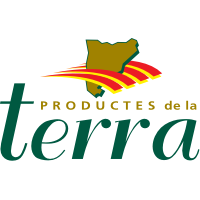PDO Extra Virgin Olive Oil Les Garrigues
Les Garrigues is one of the regions with the longest tradition and excellence in the production and marketing of oils in Catalonia, which has led it to enjoy a Protected Designation of Origin (PDO) for more than 40 years.
The extra virgin olive oil of Les Garrigues is obtained from the fruits of the olive tree (Olea europea L.), of the varieties Arbequina and Verdiell, by mechanical or by other physical means that do not produce alterations in the oil and that allow the preservation of the flavor, aroma and organoleptic characteristics of the fruit from which it comes. In the selection of olives, it must be established that at least 90% of the oil comes from the Arbequina variety. 90% of olive production is carried out on dry land. The olive is collected directly from the tree in an almost completely manual process, using a system called "milking" of the branches. Once harvested, the olives are transferred directly to the cooperatives in order to start the transformation. The olives are ground within 24 hours or, at most, within 48 hours of harvesting. The olives are moved to a pressurized air mechanism to remove leaves from the batches. The batch is then weighed and labeled with each partner's name and weight. Once this is done, they are transferred to large reception deposits, where they can stay for a maximum of 24 hours. Then they are washed, the oil is extracted, filtered and stored. Of the resulting oils, two types are distinguished: fruity oil, obtained from early harvesting and which is greenish, denser, with an almond-bitter taste; and the sweet oil, which comes from ripe fresh olives, has a yellowish colour and is sweeter and more fluid.
Season calendar
- GEN
- Feb
- Sea
- Apr
- Never
- JUN
- JUL
- AUG
- THIRST
- OCT
- nov
- From
Complementary information
Oil production in Catalonia dates back to classical antiquity. The Middle Ages was a time of expansion of olive cultivation, when oil was one of the bases of food and also had other important domestic uses, such as making light. Throughout medieval and modern times, oil production lasted, dispersed, throughout Catalonia. It is from the eighteenth century that, with the gradual transition of local agriculture towards specialization and marketing, some areas such as Empordà, Ribera d'Ebre and Segrià specialized in the cultivation of olive trees. At the beginning of the nineteenth century, the rise in oil prices favoured the expansion of this crop. In this process, three large producing areas were consolidated in the first quarter of the twentieth century: Tortosa, Reus and, particularly, Les Borges Blanques. During the first decades of the twentieth century, the Mancomunitat of Catalonia also promoted courses on olive grove management, which helped to strengthen this expansion and promote the consolidation of an agricultural model aimed at this production. Years later, despite the general crisis of the sector caused by the Civil War (1936-1939) and the post-war period, oil production in the area would obtain the "Borges Blanques" Designation of Origin, granted in 1975, to become in 1993-1994 the Les Garrigues Designation of Origin and, in 1996, in the current PDO.
Attributes and nutritional properties
The Protected Designation of Origin (PDO) only covers extra virgin olive oils, with an acidity of less than 0.5º and a maximum peroxide index of 15%. However, most oils have an acidity of 0.2º. They are packaged in containers with a maximum capacity of 5 l, which must bear a label with the legend Les Garrigues Protected Designation of Origin, the logo of the denomination and the symbol of the EU. The producing areas are large consumers of oil. Les Garrigues oil is a product that is used for cooking or raw, for dressing. It is used both at home and by restaurateurs, especially in the villages where it originates. It must always be kept fresh and sheltered by sunlight. The traditional and indeed current forms of consumption range from toast with oil and tomato to uses in raw meals – salads, vegetables – fried and stewed.








